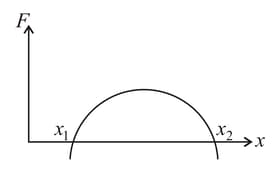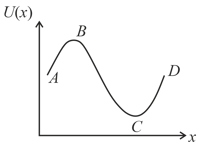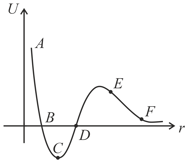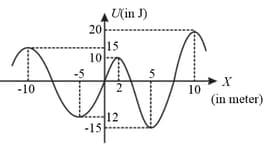BM Sharma Solutions for Chapter: Work, Power, and Energy, Exercise 3: DPP
BM Sharma Physics Solutions for Exercise - BM Sharma Solutions for Chapter: Work, Power, and Energy, Exercise 3: DPP
Attempt the free practice questions on Chapter 8: Work, Power, and Energy, Exercise 3: DPP with hints and solutions to strengthen your understanding. Chapterwise/Topicwise Daily Practice Problems (DPP) Mechanics I JEE Main & Advanced solutions are prepared by Experienced Embibe Experts.
Questions from BM Sharma Solutions for Chapter: Work, Power, and Energy, Exercise 3: DPP with Hints & Solutions
A particle of mass,, lying on-axis, experiences a force given by law, ,
where is the coordinate of the particle in .

(a) Locate the points on-axis where the particle is in equilibrium.
(b) Draw the graph of variation of force(-axis) with -coordinate of the particle (-axis). Hence or otherwise, indicate at which positions the particle is in stable or unstable equilibrium.
(c) What is the minimum speed to be imparted to the particle placed at such that it reaches the origin?
The potential energy between two atoms in a molecule is given by, , where and are positive constants and is the distance between the atoms. The atoms are in stable equilibrium when,
The force acting on a body moving along axis varies with position of the particle as shown in the figure.

The body is in stable equilibrium at
The potential energy of a particle varies with distance as shown in the graph.

The diagrams represent the potential energy as a function of the interatomic distance. Which diagram corresponds to stable molecules found in nature?
One end of an unstretched vertical spring is attached to the ceiling and an object attached to the other end is slowly lowered to its equilibrium position. If be gain in spring energy and be loss in gravitational potential energy in the process then,
If the given plot shows the variation of , the potential energy of interaction between two particles with the distance separating them is Then, which of the following statements are correct.

In the figure, the variation of the potential energy of a particle of mass is represented with respect to its -coordinate. The particle moves under the effect of this conservative force along the-axis. Which of the following statements are correct about the particle?

